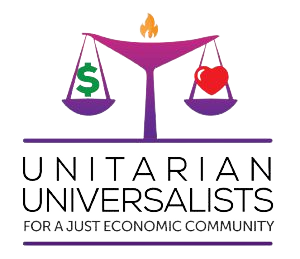Inequality and Its Consequences
Goals
- To better understand the cycles of inequality in U.S. history, including the roles of resources and of “capital”, of the government, and of the people.
- To understand why and how growth with equality from WW II to the 1970s switched to growth with escalating inequality and the meaning of the current predicament.
- To see how economic inequality is a hidden force behind so many of our social ills.
Prior Readings
- Historical Cycles of the US Economy: British Economic Colonialism (24-26), Infant Industries & Banks (42-47), Commercial Expansion & the Eire Canal (49-55), Lords of the Manor, Slaves, & Opium (57-65), Bankers & Monopolists (70-75), Andrew Jackson vs Henry Clay (100-109), Radical Economics of the Civil War (129-139), Lincoln & Railroads (141-143), Oil & Steel (160-163), Labor Fights Back (170-173), Anti-trust Law, Mergers, JP Morgan (213-223), Radical Economics of WW I (239-246), Prelude to Depression (262-267), Hoover, Roosevelt, & the New Deal (275-287), Radical Economics of WW II (308-312), Oil & the Post-War Economic Miracle (331-336), Dismantling the New Deal (381-388), Financialization & Escalating Inequality (423-441), from Land of Promise – An Economic History of the United States by Michael Lind.
- Article – Turchin on US Cycles of Inequality.
- Video of Graeber on Debt in current politics (8 minutes).
- Current Inequality in the US and How the System Was Rigged: Summary (4-6), Shared Prosperity (14-16), The 1% (20-26), How the 1% Rig the Game (34-40), Mega-Corporations (49-54), Corporate Looting (56-58), Consumer Borrowing & Wall Street Speculation (60-75), Good Rules & Taxes (98-110, 115-117), from 99 to 1 – How Wealth Inequality is Wrecking the World and What We Can Do About It by Chuck Collins. Or Bill Moyers video interview with Hacker & Pierson on Engineered Inequality (36 minutes).
- TED talk – Stiglitz on Inequality (16 minutes).
- A variety of Short Articles on Inequality and Social Dysfunction,from Divided –The Perils of our Growing Inequality, David Cay Johnston, editor.
- How Inequality Drives Societal Dysfunction, using International Comparisons: Poverty, pp 15-30, Social Insecurity, pp. 36-39, Trust, pp. 51-54, Mental Illness & Drugs, pp. 66-72, Education, pp. 103-108, Violence, pp. 133-137, Dysfunction across Classes, pp. 173-182, Consumerism, pp. 226-233, from The Spirit Level – Why Greater Equality Makes Societies Stronger by Richard Wilkinson and Kate Pickett.
Activities
5 min: Welcome and Chalice Lighting
“The disposition to admire, and almost to worship, the rich and the powerful, and to despise, or, at least, to neglect persons of poor and mean condition is the great and most universal cause of the corruption of our moral sentiments.”
Adam Smith
Optional in-depth participant story.
25 min: Historical Cycles of US Inequality
What have been the major cycles of inequality in US history, the ones lasting many decades? Why has war often marked the beginnings or ends of these cycles? What have been the roles of “capital”, “labor”, and “civil society” in escalating or mitigating inequality at different times? How about government policy? How about early prospects for limitless economic growth versus the current impacts of limits-to-growth? What have been the effects of minor cycles of inequality, such as between financial booms and busts?
10 min: Recent Escalating Inequality
Compare the escalating inequality of the last 40 years to the amazing rise of the middle class after World War II. What were the underlying causes of this radical change? – In addition to simple greed, think about technology, globalization of industry and markets, global politics, competition for resources, etc. The 1% vs the 99%: What have been the methods used by big business and the wealthy to hijack the commonwealth? – Think about union busting, massive tax shifts from the wealthy to working people, outsourcing and “free trade” to lower wages and benefits, financial deregulation and bailouts to transfer trillions of dollars from victims of fraud and taxpayers to financial predators and speculators, corporate ownership of media, tolerance of monopolistic practices, corruption of politics by big money, etc.
5 min: Break
An optional in-depth participant story.
25 min: Social Dysfunction and Inequality
Have participants who’ve done readings from the Wilkinson & Pickett book outline what they have learned. Some questions to consider: Why do think even rich people in the US would have poorer health outcomes that comparably wealthy people in Denmark or Japan? The international comparison suggest that by far the best way to improve US education would be to reduce US inequality, yet what’s the best thing to do for our schools in the mean time? Similarly a big reduction in inequality would could cut wasteful consumerism in half, yet what else can people concerned about climate and resources do now to cure “affluenza”? How do you explain the connection between violence and inequality? Between happiness and equality?
5 min: Debrief
Is there anything that has moved you to want to know more or to do something to make a difference? How will the different backgrounds and passions of the people in the group affect how we move forward? Is there anything else that you’d like to share or reflect upon? Who will volunteer to be the coordinator for Session II and the activity leaders?
“We can either have democracy in this country or we can have great wealth concentrated in the hands of a few, but we can’t have both.”
Louis Brandeis (1856–1941)
